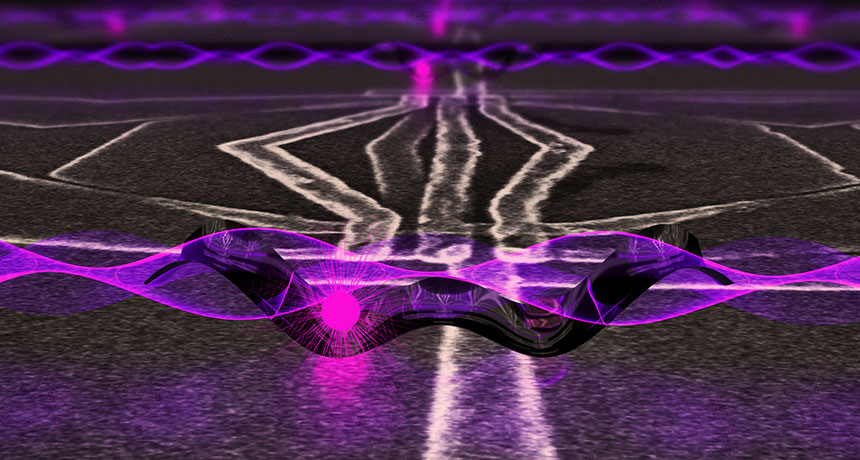Quantum computers go silicon
While not very powerful, the machine is ‘a big symbolic step’

SILICON STEPS UP Scientists are performing new quantum feats with silicon-based devices (background, shown in a scanning electron microscope image). In a technique that could help silicon quantum computers scale up, a particle of light (pink waves) was made to interact with the spin of a single electron (pink circle).
Emily Edwards/University of Maryland







